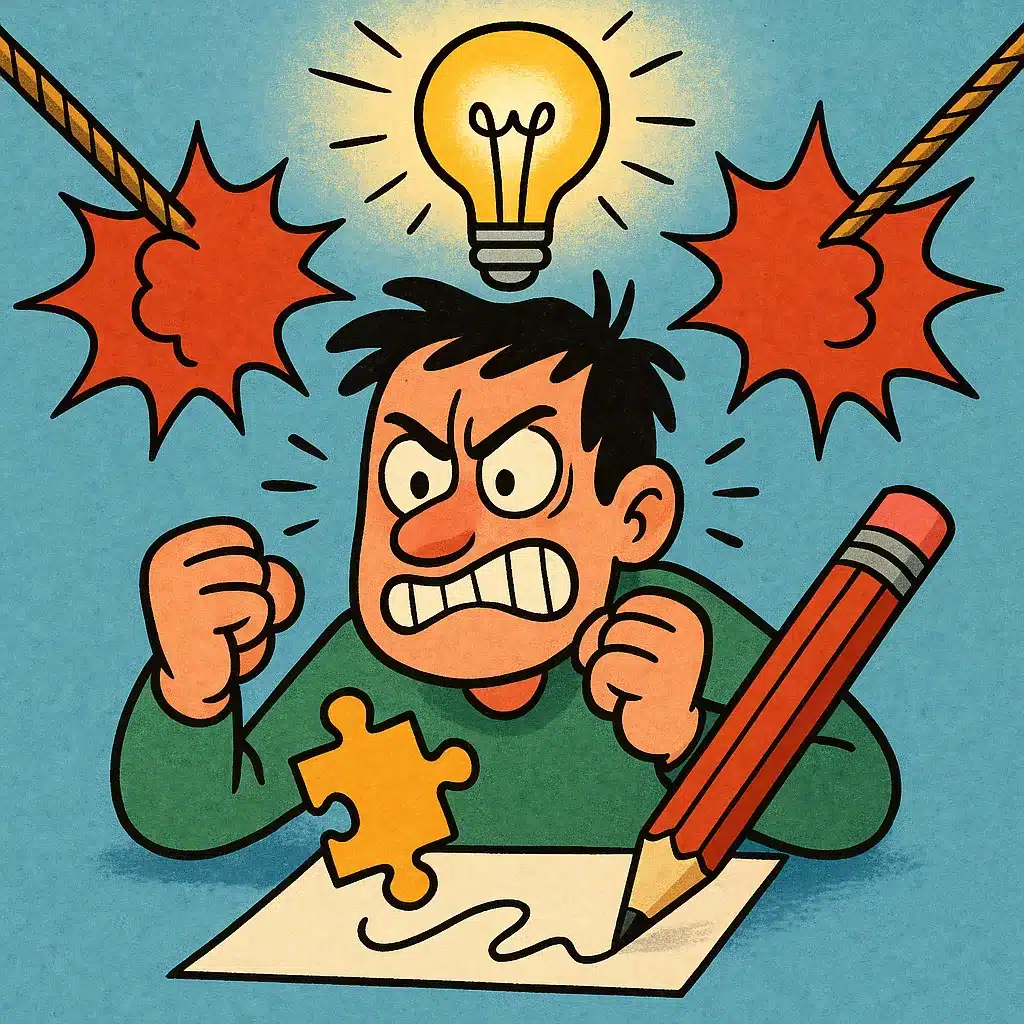Conceptual tension builds creative output, especially today as AI tools and human creativity clash and collaborate. This article explores how current trends—generative AI, dialectical creativity theories, and uncertainty‑driven design—show that tension is not a hurdle but a catalyst for originality.

What Is Conceptual Tension—and Why It Matters to Creativity?
The notion that conceptual tension builds creative output stems from the idea that pushing between opposites—order and chaos, constraints and freedom—generates new ideas. Peter Senge coined Creative Tension to describe how mismatch between vision and reality motivates change. In neuroscience, Rainer Holm‐Hadulla’s dialectical theory shows creativity emerging from interplay between convergent and divergent thought, discipline and chaos.
Emerging Trend: Human–AI Creative Tension in 2025
1. Generative AI introduces cognitive dissonance
A new study labels the rise of generative AI as triggering cognitive dissonance among academic writers. This tension between AI‑efficiency and principles of originality can spark reflective awareness and innovation if managed well.
2. Extended Creativity: Modes of human‑AI interplay
Recent theory outlines three modes of AI influence: Support (tool), Synergy (collaborative), and Symbiosis (integrated cognition). As conceptual tension builds creative output, these modes define varying creative intensities depending on autonomy and agency levels.
3. Limited diversity but high volume: Creativity gap in AI
A June 2025 Nature Human Behavior study reveals that while tools like ChatGPT generate many ideas quickly, these lack the variation human brainstorming yields. That creative tension—using AI plus human input—drives more novel results than AI alone.
Why This Tension Is Actually Fueling Innovation
A spark from conflict:
In project research, micro‑tensions among collaborators often produce breakthroughs—pushback, disagreement, opposing viewpoints create generative friction. This phenomenon extends beyond academic settings into corporate innovation labs and artistic collaborations. When team members challenge each other’s assumptions, they force deeper examination of ideas that might otherwise remain superficial. Research shows that teams with moderate task conflict consistently outperform harmonious groups in creative problem-solving, transforming potential roadblocks into launching pads for breakthrough thinking.
Chaos meets predictability:
Cognitive science suggests the brain thrives balancing certainty with novelty. Exposure to uncertainty—art, horror, meditation—enhances creativity by disrupting predictive loops. Our neural networks constantly anticipate what comes next based on past experience. When these predictions fail, the brain enters a heightened state of attention and flexibility, creating openings for new connections between previously unrelated concepts. The sweet spot exists neither in pure chaos nor complete predictability, but in the liminal space where both forces interact, literally rewiring our cognitive architecture to make us more receptive to innovative solutions.
Blending modes generate novel ideas:
Conceptual blending theory explains how combining input spaces leads to emergent, new structures. Interactions of disparate mental models create surprising results. This cognitive mechanism operates like a mental chemistry set, where combining different conceptual elements produces compounds with properties neither ingredient possessed alone. When “biology” meets “engineering,” biomimicry emerges, giving us velcro inspired by burr seeds or airplane wings modeled after bird flight.
Innovation often occurs at the intersection of disciplines because each field brings its own vocabulary, methodologies, and assumptions to the table. When a physicist collaborates with a musician, or when a biologist partners with a computer scientist, their different ways of seeing create productive interference patterns. The tension between maintaining domain expertise and embracing interdisciplinary thinking creates a dynamic equilibrium that fuels continuous innovation.
Practical Guide: Tension‑Driven Creativity for Teams & Solo Creators
1. Design tension-rich workflows:
- Encourage divergent vs convergent phases: alternate brainstorming (divergent) with narrowing/integration (convergent).
- Push humans + AI: assign idea generation via AI, then human professionals remix or critique.
2. Use AI in Synergy or Symbiosis mode
- In Support mode: use AI to produce initial drafts or sketches.
- In Synergy mode: humans and AI take turns refining ideas.
- In Symbiosis: co‑creative systems that embed AI as collaborator, expanding the tension between autonomy and agency.
3. Introduce controlled uncertainty
- Use noise injection in creative prompts.
- Force designers to mix unrelated domains or constraints.
- Let generative tools “dream” without human prompts occasionally to surface latent surprises.
4. Debate style vs authenticity in creative teams
Adobe’s recent initiative stresses tension between accelerating new outputs and protecting unique creative style. Content credentials and legal frameworks help maintain tension in the right places—innovation versus intellectual property.
Case Study: Creative Agencies in 2025
A growing number of creative agencies now use conceptual tension builds creative output strategically:
- Use AI to rapidly draft multiple campaign visuals, then bring human designers to pick, blend, or inject unusual elements.
- Teams hold “tension sessions”: voice conflicts or contradictory ideas early in the process to prevent consensus bias.
- Agencies adopt content provenance systems to differentiate human style even when AI is involved.
Conceptual Tension Builds Creative Output in Action
Key benefits:
- Higher novelty: tension forces departure from clichés.
- Mental flexibility: alternating constraints and openness keeps cognition adaptive.
- Collaborative spark: conflicting perspectives push teams beyond comfort zones.
Challenges to Watch
- Tension without support can backfire: excessive cognitive dissonance may demoralise.
- AI hallucinations may mislead—so human validation remains key.
- Legal ambiguity around AI‑generated style imitation is still unresolved—requires oversight.
Conclusion: Embrace Productive Tension to Elevate Creativity
In 2025, conceptual tension builds creative output more than before. Whether through human–AI brain-storming friction, dialectical cognitive processing, or blending across ideas, tension catalyzes innovation. Teams and solo creators who design for conflict in controlled ways—between tools, constraints, and thinking styles—unlock original, high‑impact work.
References
- Ouwens, J. F. A. (2019). C‑reating: how to define vision and concept / Creative Tension Engine. In D. Nijs (Ed.), Advanced imagineering: designing innovation as collective creation (pp. 119–137). Edward Elgar Publishing. Available from https://search‑ebscohost‑com.buas.idm.oclc.org/
- Smith, J., & others. (2022). Journal of Organizational Behavior, (online, 2022). Available from ResearchGate summary. researchgate.net
- Perez‑Freije, & Enkel. (2023). Journal of Business Research, 2023. Available via ScienceDirect summary. mddsdentist.com






